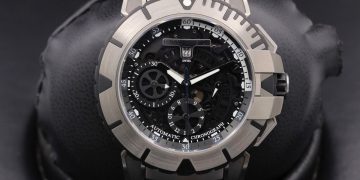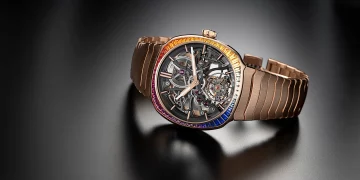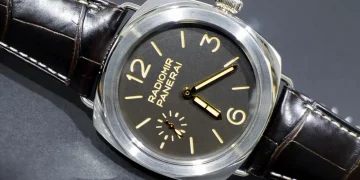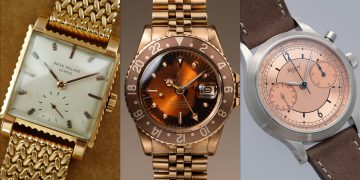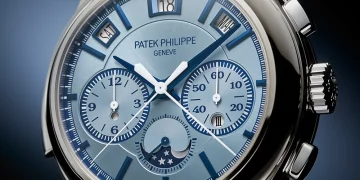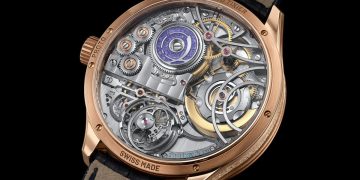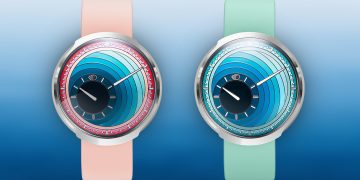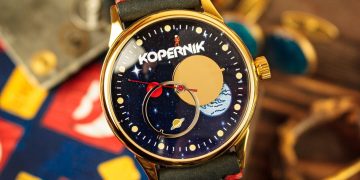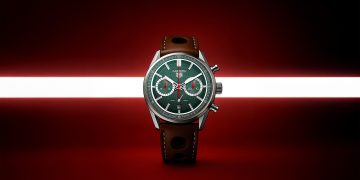Introduction: A Journey into the World of Horological Masterpieces
In the world of fine watchmaking, two of the most revered and complex complications are the Perpetual Calendar and the Tourbillon. These two mechanical wonders not only represent incredible feats of engineering but also serve as symbols of luxury, craftsmanship, and heritage. This article will explore the history, development, and influence of both the Perpetual Calendar and Tourbillon, examining the key brands that helped shape their evolution and how these two complications have defined the art of watchmaking over the centuries.
Chapter 1: The Origins and Evolution of Perpetual Calendar Watches
1.1 The Concept of the Perpetual Calendar
The Perpetual Calendar complication is designed to automatically adjust for different month lengths and leap years, providing continuous accuracy for the date without the need for manual corrections. This sophisticated mechanism has been a staple in the world of high-end horology for centuries.
- Early Beginnings: The earliest recorded use of a calendar complication dates back to the 16th century, with rudimentary designs. However, it was during the 19th century that the Perpetual Calendar truly began to take form, thanks to the ingenuity of some of the finest watchmakers.
- Key Figures: The Perpetual Calendar complication became widely recognized due to the contributions of Patek Philippe and Audemars Piguet, two of the most prestigious Swiss brands that would go on to create the most revered Perpetual Calendar watches.
1.2 The Development of the Perpetual Calendar
- Patek Philippe and the Grand Complications: Patek Philippe is perhaps the most notable brand associated with the perpetual calendar. Their Caliber 89, introduced in 1989, is considered one of the most complicated watches ever created, featuring a perpetual calendar among other advanced complications.
- Audemars Piguet’s Contribution: Audemars Piguet’s Royal Oak series, launched in the 1970s, integrated the Perpetual Calendar complication into a luxury sports watch, making it more accessible and fashionable for modern collectors.
- Other Notable Brands: Other brands like IWC, Jaeger-LeCoultre, and Vacheron Constantin have also been instrumental in advancing perpetual calendar designs, adding their own variations to the complication over time.
Chapter 2: The Origins and Evolution of Tourbillon Watches
2.1 The Inception of the Tourbillon
The Tourbillon complication was invented by the legendary watchmaker Abraham-Louis Breguet in the late 18th century. Its purpose was to counteract the effects of gravity on the escapement, improving the accuracy of pocket watches.
- Breguet’s Vision: Breguet developed the Tourbillon to address the inaccuracies caused by gravity when pocket watches were held in a fixed position. This innovation helped create a revolution in horology and cemented Breguet’s place in history as one of the greatest watchmakers of all time.
- Mechanical Structure: The tourbillon involves a rotating cage that houses the escapement and balance wheel, causing them to rotate continuously, ensuring that gravitational forces have a minimal impact on timekeeping.
2.2 The Evolution of the Tourbillon
- Breguet’s Legacy: After Breguet’s initial creation, the Tourbillon remained largely exclusive to pocket watches. In the modern era, its use in wristwatches became a highly coveted feature, primarily due to its complexity and aesthetic appeal.
- Modern Implementation: In the 20th and 21st centuries, several high-end brands, including Patek Philippe, Jaeger-LeCoultre, and Audemars Piguet, have produced remarkable Tourbillon watches. The complication is not only a technical feat but also a statement of luxury and craftsmanship.
Chapter 3: Key Brands and Their Contributions to Perpetual Calendar Watches and Tourbillons
3.1 Patek Philippe: The Master of Perpetual Calendar and Tourbillon
- Patek Philippe’s Masterpieces: Patek Philippe’s Grand Complications range is where the brand has showcased its brilliance in both Perpetual Calendar and Tourbillon complications. The Patek Philippe Ref. 5207 integrates both complications in one stunning timepiece, epitomizing the brand’s commitment to excellence and precision.
- Historical Significance: Patek Philippe’s legacy in crafting perpetual calendars and Tourbillons has helped set standards for the entire industry.
3.2 Audemars Piguet: Innovation in Perpetual Calendars
- Royal Oak Perpetual Calendar: Audemars Piguet’s iconic Royal Oak collection revolutionized the design of luxury watches by integrating perpetual calendar complications within a stainless steel sports watch. The watch was not just a functional timepiece but also an aesthetic milestone in watchmaking history.
- Audemars Piguet’s Tourbillons: While known for its Perpetual Calendar watches, Audemars Piguet also produces Tourbillon watches, often combining both complications in a seamless fusion of artistry and engineering.
3.3 Other Renowned Brands
- Jaeger-LeCoultre: Known for its Jaeger-LeCoultre Master Grand Tradition Tourbillon, this brand has produced a range of Tourbillon watches, elevating the concept of the rotating escapement and incorporating it into luxury wristwatches.
- Vacheron Constantin: As one of the oldest Swiss watchmaking houses, Vacheron Constantin has produced exquisite Tourbillon watches and continues to create some of the most sophisticated timepieces today, known for their innovative complications.

Chapter 4: The Technological Advancements in Perpetual Calendar Watches and Tourbillons
4.1 Mechanical Innovations in Perpetual Calendar Watches
- Movement Design: The complexity of the perpetual calendar requires advanced mechanical architecture. Modern perpetual calendar movements feature sophisticated gear trains, cams, and levers that work together to ensure that the date, day, month, and leap year are all automatically adjusted.
- Integration with Other Complications: Some of the most complicated perpetual calendar watches feature other complications, such as minute repeaters, chronographs, and tourbillons, showcasing the versatility of the perpetual calendar complication.
4.2 Mechanical Innovations in Tourbillon Watches
- Rotating Escapement: The escapement mechanism of a tourbillon is designed to rotate continuously, ensuring that the effects of gravity are negated. Modern innovations have made this complication even more precise and functional, improving the overall accuracy of the timepiece.
- Skeletonized Tourbillons: Some of the most aesthetically stunning tourbillons feature skeletonized designs, where the inner workings of the watch are visible, showcasing the beauty of the rotating cage and the overall craftsmanship.
Chapter 5: Conclusion: The Legacy of Perpetual Calendar Watches and Tourbillons in Modern Watchmaking
Both Perpetual Calendar watches and Tourbillon watches represent pinnacles of horological engineering, standing as a testament to the craftsmanship, precision, and innovative spirit of the watchmaking industry. Through their historical evolution and technological advancements, these complications have solidified their place as luxury icons and symbols of horological mastery.
- Perpetual Calendar Watches have become symbols of convenience and accuracy, offering solutions to the complexity of keeping track of changing months, leap years, and days without manual adjustments. These watches are widely admired for their functionality and elegance.
- Tourbillon Watches remain the epitome of technical mastery, where form meets function. The rotating escapement not only improves accuracy but also serves as a showcase of engineering and artistic finesse.
As time progresses, the legacy of these complications will continue to influence modern watchmaking, inspiring future generations of horologists to push the boundaries of what is possible in mechanical watches.



